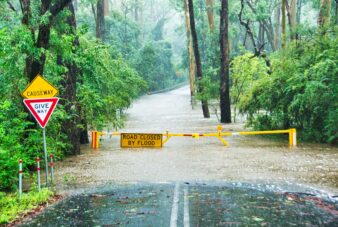Mobile Industry Resilience During Natural Disasters

The mobile telecommunications industry in Australia, represented by the Australian Mobile
Telecommunications Association (AMTA), invests substantially in infrastructure, technology,
and preparedness initiatives to mitigate the impact of natural disasters. This includes
deploying backup power systems such as generators and battery backups to ensure
continued service availability during disruptions.
Most mobile network outages during natural disasters are due to power loss. This means the
mobile telecommunications industry is heavily reliant on a reliable power network to maintain
service continuity. During natural disasters, mobile telecommunication providers actively
engage with power providers to enhance coordination and resilience in power supply
infrastructure.
Significant investments by the mobile telecommunications industry in backup power systems
such as generators and batteries are keeping more Australians connected than ever before
during natural disasters, including the recent widespread power outage affecting the
Victorian community.
The CEO of AMTA, Ms Louise Hyland said: “Unfortunately, we continue to see natural
disasters impacting communities in Victoria. The mobile industry understands the critical
importance of connectivity during these times and has been working hard to minimise the
disruption to Victorians”.
“The simple fact is that mobile phone networks need power to operate. The mobile
telecommunications industry has back-up solutions in place, but these are temporary
solutions until power can be restored”.
“No network can ever be 100 per cent disaster proof, but when disaster does strike, the
mobile industry works tirelessly to get networks back up as quickly as possible. More than
1,000 mobile base stations were impacted by the storm, mainly due to power outages. By
the end of last week, mobile operators had restored more than 90 per cent of the services”.
The telecommunications industry continues to invest in equipment to respond quickly to
natural disasters. Industry is also working with Albanese Government through the $50 million
Telecommunications Disaster Resilience Innovation (TDRI) program, to support and
accelerate the development and deployment of new, innovative technologies and solutions
to address known communications issues during natural disasters.
Industry has also worked with the federal Government to deliver the Strengthening
Telecommunications Against Natural Disasters (STAND) program, providing battery back-up
for mobile towers and portable communications facilities across Australia. These assets
have been utilised in recent natural disasters, including the December 2021 and January
2022 Western Australia bushfires, the June 2021 Victorian storm and flood event, the 2022
East Coast Floods in New South Wales and Queensland, and Cyclone Seroja in Western
Australia.
The mobile industry and AMTA will continue to engage with the Victorian and Federal
Governments on mobile network resilience during natural disasters.
About AMTA
The Australian Mobile Telecommunications Association (AMTA) serves as the leading industry body
representing Australia’s mobile telecommunications sector. Our mission is to promote an
environmentally and socially responsible, safe, and sustainable mobile telecommunications industry,
which delivers high-quality, affordable mobile services to Australian customers.
Media contact:
Katie Alstead 0431 908 284

